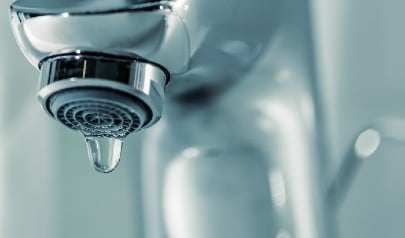Searching for Signs of Water Damage in the Bathroom
Searching for Signs of Water Damage in the Bathroom
Blog Article
What are your thoughts on How to Repair and Prevent Bathroom Water Damage?

The washroom is exceptionally at risk for wet buildup as well as prospective water damages because of the regular use water in it. This write-up supplies easy assessment techniques to assist identifying water damages threats.
The constant use water in the washroom makes it very susceptible for moist accumulation and possible water damages. By evaluating it on a regular basis, you can minimize water associated damages.
The adhering to set of evaluations is easy to execute as well as must be done when in every three months in order to keep your restroom in good shape and to prevent potential water damages caused by the bath tub, the shower, pipeline joints and also plumbing, sinks, cupboards, as well as the bathroom
Do not neglect executing these examinations as well as be comprehensive while executing them. Remember that these easy inspections can conserve you a great deal of money by giving very early signs for water damages
Bathtub and also Shower
The shower as well as bathtub call for unique attention and also upkeep. Check the floor tiles as well as replace if split. Make certain that there is no missing grout between the floor tiles. Examine and also replace cracked caulking at joints where the wall surfaces meet the flooring or the tub. Clogged drains pipes and pipelines problems will certainly avoid the bath tub from drying and might indicate severe problems under the tub. Seek advice from an expert immediately to avoid architectural damage. Take notice of discolorations or soft locations around the bathtub wall surfaces as they may suggest an internal leakage.
Plumbing
Signs for water damages are difficult to discover since a lot of pipes are mounted inside the walls.
Pay unique interest to floor covering as well as walls wetness and spots as they may suggest an invisible plumbing trouble. Check dampness levels in adjacent rooms also.
Sinks and Cabinets
Sinks as well as cabinets are subjected to dampness as well as moisture daily and also are frequently forgotten. Inspect on a regular basis under the sink and on the counter top above it. Repair any kind of drip in the trap as it might recommend drain issues. Browse the sink, slow-moving draining pipelines may suggest an obstructed drainpipe. Change sink seals if they are cracked or loose.
The Bathroom
The commode is a vulnerable water junction. Inspect the water lines as well as look for leakages around the toilet seat, in the hose pipe, as well as under the water storage tank. If you identify any signs of wetness on the floor around the bathroom, look for leakages in the toilet edge and tank seals.
Understand that hanging bathroom dish antiperspirants raises the opportunities for clogs.
TIPS TO PREVENT WATER DAMAGE IN THE BATHROOM
The average household uses approximately 80-100 gallons of water per person per day. For a family of 4, that's almost 2,500 gallons of water a week! The largest portion of this consumption comes from bathroom use. Flushing the toilet uses the most water, followed by taking a shower or bath. With that much water running through the home, water damage in the bathroom is bound to happen. Knowing how to spot signs of a water leak is essential to preventing long-term damage. This guide provides you with tips to reduce the impact of water damage on your bathroom.
CAUSES OF BATHROOM WATER DAMAGE
Pipe breaks are the most common cause of water damage we see in our daily jobs. The age of a pipe plays a large role in a pipe break as well as corrosion. Over time, the metal begins to break down, allowing water to escape. Frozen pipe breaks are also a concern in the winter months. Toilet overflows caused by paper products or children flushing inappropriate items. Degraded caulking around the toilet or bathtub can allow water seepage, sometimes behind the fixture, into the subfloor or walls. Condensation forms when the water in a pipe is cooler than the air temperature. Beads of water form on the exterior of the pipes, sometimes so much so that the water begins to drip and pool below. Sink or shower backups created by poor drainage. HOW TO PREVENT WATER DAMAGE IN YOUR BATHROOM
Inspect your toilet supply line for worn or frayed hoses and replace them as needed. Winterize your plumbing to prevent a frozen pipe break. Use vent fans to prevent condensation that can lead to mold growth. Routinely check and replace degraded caulking around your toilet or bathtub. Increase the temperature in your toilet tank and insulate your pipes during the warm summer months to keep condensation from forming. Use child safety locks on the toilets. Flush only toilet paper. "Flushable" wet wipes are actually not good for your plumbing system. Additionally, feminine hygiene products should not be flushed. Prevent water from escaping the tub or shower. Make sure shower curtains are in good condition. Inspect shower doors and replace the seal strip if necessary. Wipe up any water that accumulates on the floor and use bath mats. Water left to sit can cause damage to the tiles and flooring. Refrain from using bath products containing heavy oils to avoid a clogged drain.

Do you enjoy reading up on How to Prevent Bathroom Water Damage? Give a remark down the page. We would be glad to see your opinion about this posting. In hopes that you visit us again later on. Sharing is caring. Helping people is fun. We cherish reading our article about Preventing Water Damage in the Bathroom.
Click Here To Read More Report this page